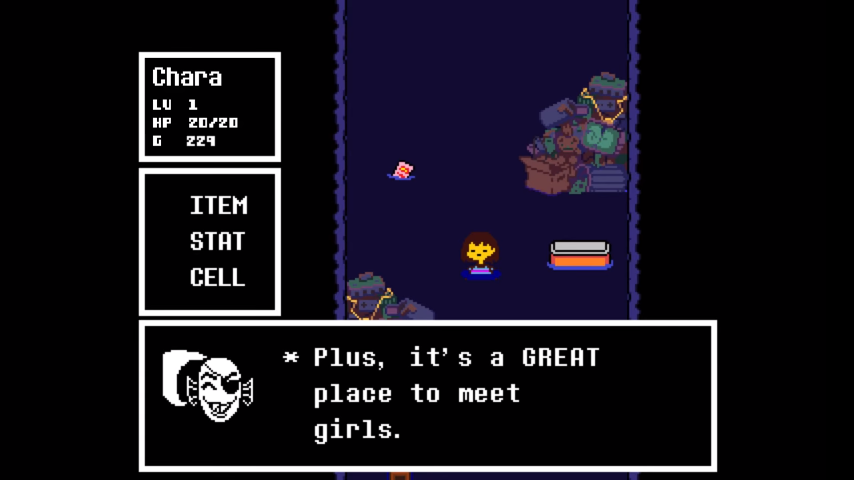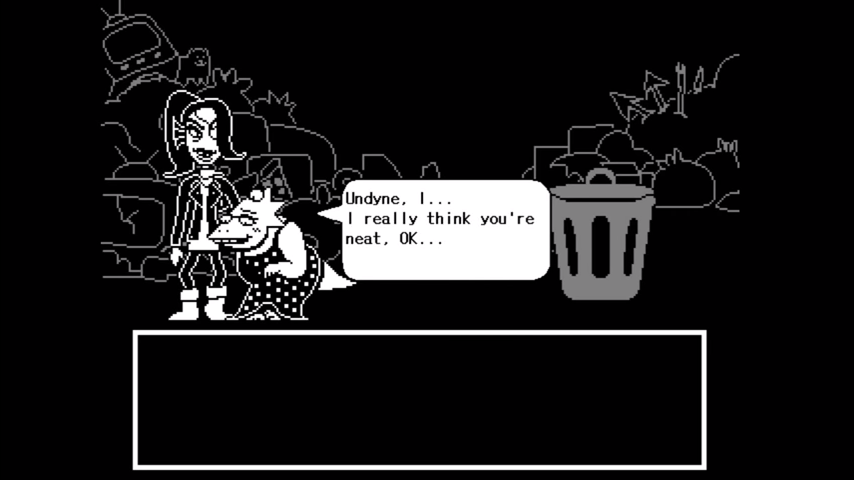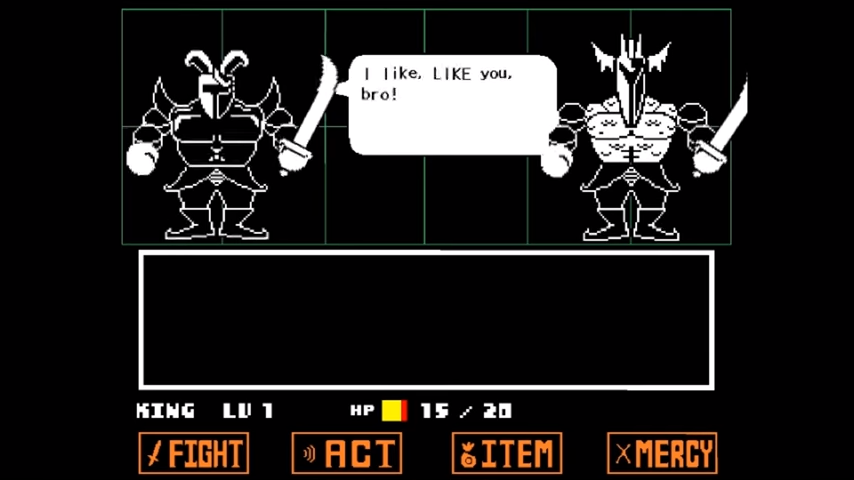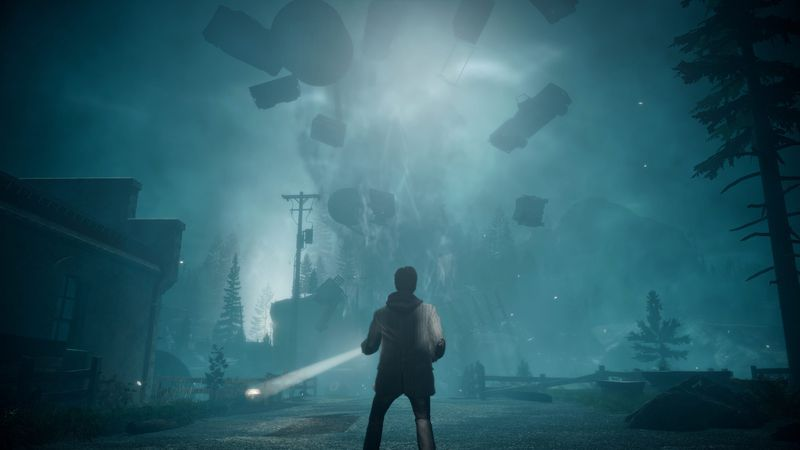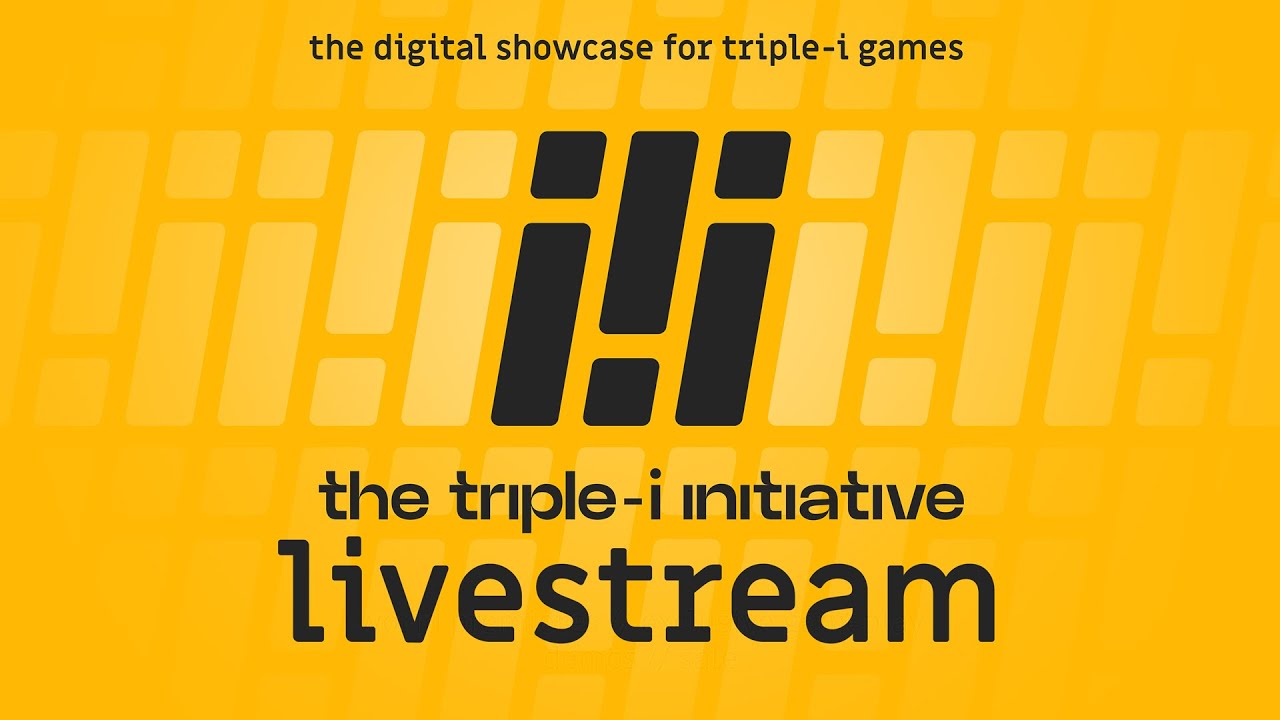Looking back on 2015, it’s easy to see that it was a good year for video games. However, was it a good year for the LGBT gamers who played them? In this series of articles, I’ll be reexamining some of the games that came out last year featuring LGBT characters and themes, reviewing how well they were executed and the effects they could have on future games.
Undertale is a game that I didn’t know what to expect going in. While I was interested in the game when I first saw the kickstarter a long while back, I ended up passing on giving any money to it and proceeded to forget about it until its release date in October last year. After hearing a lot of positive buzz, I promptly purchased the game to see if it was really any good. As can be seen from my GOTY top 10 list, it more than delivered.
If you haven’t played Undertale, you might not guess that it would be the kind of game talked about in this series of articles at first glance. Unlike Life is Strange, I wasn’t expecting much in the way of LGBT representation when I picked this one up. It doesn’t wear a rainbow-colored heart on its sleeve or advertise itself as some kind of grand bastion of inclusiveness. That’s because instead of touting itself as such, it just is. Undertale lets its characters and narrative choices speak for themselves instead of using representation as some kind of hook or angle. This is the kind of thing I wish all games would do, and Undertale proves that there’s nothing stopping them from doing so.
In Undertale, the characters Undyne and Dr. Alphys share mutual crushes on each other. While this is not readily apparent at first, it is increasingly hinted at over time. It eventually reaches a narrative boiling point as one of the keys to the player getting the game’s true pacifist ending when Undyne has you deliver a love letter to Alphys. This results in a practice date with the player and Alphys, resulting in the doctor confessing the truth of both her feelings for Undyne and some of the lies she’s perpetuated to her crush.
Undertale takes a noticeably different approach to its lesbian relationship than Life is Strange. Life is Strange’s approach is an intimately personal one between the protagonist and the game’s most prominent NPC. Exploring their past together as they grow closer in the present is one of the game’s driving plot forces. Undertale approaches it from the outside view of the protagonist viewing two NPC who initially don’t share much screen time or direct interaction at all. While their romantic feelings towards one another does eventually become an important plot point, it is not the main force driving the game’s plot forward.
What makes this a more successful take on a lesbian relationship than Life is Strange’s isn’t the difference in approach, but the execution. Indeed, if both game’s had managed to execute on their approaches properly, I’d actually be more likely to favor Life is Strange’s take on it. I generally prefer to have a relationship between women be central to the entire plot of a game instead of one of many subplots. However, Undertale delivers in a way that Life is Strange failed to do, the former confidently striding forward where the latter stumbled and fell.
One of the biggest points in Undertale’s favor is that it doesn’t rely on ambiguous subtext to show the romantic feelings shared between Alphys and Undyne. The game is upfront in showing that Alphys is bisexual and Undyne is a lesbian. While it does start out with more subtle hints, these lead into the game outright having the characters state how they feel about each other. There’s never any uncertainty on whether their feelings are romantic or “just strong feelings of sisterly friendship” towards one another. There’s no room to argue that the kiss Undyne gives Alphys was somehow just a “friendship” kiss.
Another big point in Undertale’s favor is that the love between Undyne and Alphys isn’t forced into any sort of constricting catastrophic context. As I mentioned in part 1, the Tragic Lesbians trope is one that is both toxic and far too prevalent in popular media. It is, arguably, the biggest mistake made with the ending of Life is Strange. Thankfully, Undertale contextualizes the relationship between Undyne and Alphys in a positive manner instead of trying to shove its gay square peg into a round hole of tragedy.
While there are many endings where one or both characters die, none of these are the direct result of the relationship between these two characters. These sadder paths aren’t a prerequisite for the player to see the love between Undyne and Alphys bloom. Indeed, the one path in the game that develops their relationship from a mutual crush to a shared romantic relationship is one that ends the most positively for both of them. It is also the best possible path for every other character in the game, framing their relationship in the most positive way possible.
The third big point in Undertale’s favor compared to Life is Strange actually lies outside of their respective lesbian relationships entirely. Simply put, Undertale not only has more LGBT representation in general compared to Life is Strange, but has a wider variety of LGBT representation as well. With Life is Strange, there’s nothing to really bite into outside the main relationship between Max and Chloe. There’s no other positive gay relationships or LGBT characters to latch on to.
With Undertale, Undyne and Alphys are far from the only LGBT characters in the game. In terms of other couples, there’s a pair of royal guards in Hotland who you can defeat by getting one to ask the other on an ice cream date. The game’s protagonist, Frisk, is nonbinary and goes by they/them pronouns. This is important in a genre that far too often forces players to answer the question “are you a boy or a girl” without any consideration for those who might lie outside of those limited choices. It also places a nonbinary identity on an actual human character instead of the usual suspects of an alien or robot of some kind.
On the subject of robots, it would be a mistake to not talk about Mettaton. A literal “ghost in the shell,” this robot is revealed to be the ghostly cousin of Napstablook given a physical body by Alphys. A lot of the language and concepts used for Mettaton’s desire for a physical form and eventual move to actually using one heavily echo the kind of language often used by trans people when talking about dysphoria and transitioning. Every other ghost in the game uses they/them pronouns, implying that this is the norm for ghost monsters. This is further demonstrated when Undyne, not realizing that Napstablook’s cousin and Mettaton are the same person, uses they/them pronouns when referring to the former instead of Mettaton’s usual he/him pronoun set. This means that Mettaton deliberately chose to go by he/him pronouns after transitioning to a physical form. Since the monster society in Undertale is shown to be very accepting of nonbinary identities, this isn’t something he had to do for the sake of his new television career, but was a personal choice he made for himself.
All of this heavily implies that Mettaton is a transgender man. Unfortunately, heavily implying and outright stating are two very different things. No matter how much the text backs these ideas up, they’re never made outright canon. This is one of the few places where Undertale falls short, relying on subtext without ever giving it any support beyond that. This sort of representation seems nice at first glance, but if it can’t be written on a wiki page due to lack of textual support then it’s all for not. Simply put, the game wrote a queer check that the actual text couldn’t cash.
While not all of Undertale’s representation is perfect, it’s a massive step above most other games that came out in 2015. Where Life is Strange let me down, Undertale lifted me up and gave me hope for the inclusiveness of games in the future. I hope aspiring game developers inspired by Undertale realize that the strength and diversity of its characters is part of the reason why it was boosted to such high popularity so quickly. Hopefully they decide to incorporate these things into their own future projects. The world needs more games where cute girls can smooch each other without immediately dying and human characters don’t need a specific binary gender.

